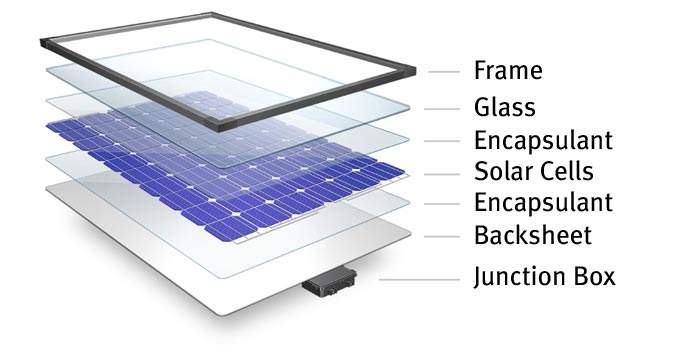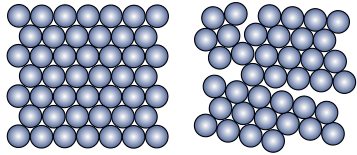How solar panels are built?
Renewable energy sources and their applications are widespread nowadays. Solar systems as a green energy resource are provided widely to convert the sunlight to electricity. The efficiency of a photovoltaic system is one of the most important factors in output power and the amount of electricity which is provided by solar panels. Recently the fabrication process and materials used in solar panels attract the researchers’ studies. Here we will discuss the materials employed in panel construction; it is clear that high-quality materials will lead to higher efficiency levels. Silicon due to the semiconductor characteristics is the main material in solar panels’ design where sun rays illuminating the panel electrons stir from the n-type semiconductors where there are major carriers to the p-type semiconductors to form the electrical current. The quality of silicon employed in the panel design and fabrication process play a key role in determining the efficiency of the system. Solar panel is a multi-layer structure consists of silicon wafer as the basic semiconductor material to act as a rectifier, ethylene-vinyl acetate (EVA) as transparent plastic layers to laminate the silicon wafer, high-quality glass with the thickness of 3-4 mm with anti-reflection characteristics loss to improve light transmission; the glass employed in solar panel should be resistant to high temperatures and heavy loads. Metallic frame to hold the wafer and EVA layers and improve the stability of the solar panel and aluminum is a common material in frame construction. The backside of the panel is also protected by a plastic sheet made of PET or other polymers to avoid moisture and dust penetration to the solar panel’s structure; some solar panels are available in which two glass layers are employed in construction, in other words, the plastic back sheet is substituted by a glass layer.

Figure 1-multi-layer structure of the solar panel
The type of silicon used in panel construction categorizes the solar panels to monocrystalline and polycrystalline ones. In monocrystalline solar panels, single-crystal silicon is doped by other materials such as boron or phosphorus to make n-type and p-type semiconductors while in the polycrystalline solar panels various crystallites compose the wafer and doped by same materials to enrich the conductivity of the structure. Most of the silicon materials which are available in nature are in the form of polycrystalline but it should be noted that monocrystalline solar panels are more efficient than polycrystalline ones.

Figure 2- the difference between monocrystalline and polycrystalline materials
Silicon crystals are made by melting the silicon ingots and boron or phosphorus in a specific oven to create p-type and n-type semiconductors, the specific ovens are mostly in cylindrical shapes. Silicon nitride is also applied to solar cells to change the color of cells to dark blue to minimize the reflection of sun rays and hence maximize the absorb ratio.

Wow!! Amazing blog. you are really a great writer. your solar panel procedure is really great. Solar panel installation is important for saving money and the environment.
Thank you David!
Thanks for sharing 🙂
The best place to start is by sizing the system. You need to calculate how many kilowatt-hours of electricity you will need each month. Shade from trees, buildings, and mountains can affect your home’s solar potential.
Thanks for your comments
Nice article! informative article for reader… i also come up with the best solar panel installation services visit solar companies connecticut
Thank you so much for sharing this important information article…
We are also providing complete solar services in the United States of America. https://afforablesolarpanelsdallas.com/
Thanks for your comments Herry.